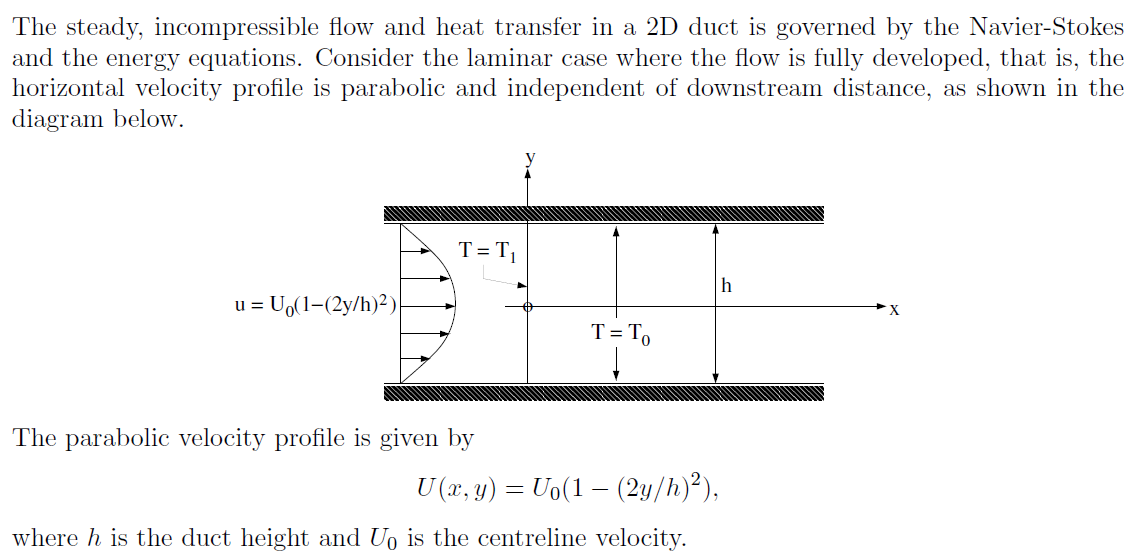Home /
Expert Answers /
Mechanical Engineering /
the-steady-incompressible-flow-and-heat-transfer-in-a-2d-duct-is-governed-by-the-navier-stokes-an-pa487
(Solved): The steady, incompressible flow and heat transfer in a 2D duct is governed by the Navier-Stokes an ...
The steady, incompressible flow and heat transfer in a 2D duct is governed by the Navier-Stokes and the energy equations. Consider the laminar case where the flow is fully developed, that is, the horizontal velocity profile is parabolic and independent of downstream distance, as shown in the diagram below. T = T? h u = U?(1-(2y/h)²) X T = To The parabolic velocity profile is given by U(x, y) = Uo(1 — (2y/h)²), where h is the duct height and Uo is the centreline velocity.
At x = 0, an ingenious mesh heating element is used to maintain the temperature across the duct at T(x = 0, y) = T?, and a clever refrigeration mechanism is used to keep the walls at a temperature of T(x, y = ±h/2) = To (including the points on the walls at x = 0). The governing energy equation, taking suitable approximations, is 8²T ?T =K U ????? ?y²¹ where u is the local streamwise velocity and is the thermal conductivity. Non-dimensionalising variables so that x = x/h, y = y/h, u'=u/Uo, T' = (T-To) (T?-To)' allows the non-dimensionalised energy equation to be written ?T 1 8²T ????? ?? ??2 where the Peclet number is Pe = Uoh/k, and the dashes have been dropped from each of the variables for convenience. The velocity and boundary conditions also simplify to u(x = 0, y) = 1 - 4y²; u(x, y = ±1/2) = 0; T(x = 0, y) = 1; T(x, y = ±1/2) = 0. It is desired to evaluate the downstream temperature in the duct using finite-differences. A mesh is overlaid, as shown in the diagram below. Again, note that dependent and independent variables are non-dimensional in these equations. 3 u= (1-4y²2) i = 0 1 2 For a suitable simple finite-difference approximation, the PDE can be approximated about at a point (i, j) using a first-order backward-difference expression for T/Or and a central-difference approximation for 8²T/Oy2. Note that you can assume symmetry about the centreline, so that T?,1 = T?,3, therefore for the mesh shown you only need to set up and solve for j = 1 and 2. (i) Write down the finite-difference approximation to the governing energy equation. (ii) Using the mesh shown, set up the equations to evaluate the non-dimensional temperature at x = x? = Ax, taking Ax = 1, for a Peclet number of 16, and hence find the temperature at the centreline for x = 1. (iii) What is the classification of the energy equation? Why? (iv) Suppose that instead of solving the finite-difference problem directly, you use the Gauss-Seidel iterative approach to determine the temperature profile at x = ?. Determine the iteration matrix for the Gauss-Seidel method. (v) Determine the spectral radius of this matrix and hence determine an upper limit to the number of iterations required to reduce the error by five orders of magnitude from an initial guess. = "

